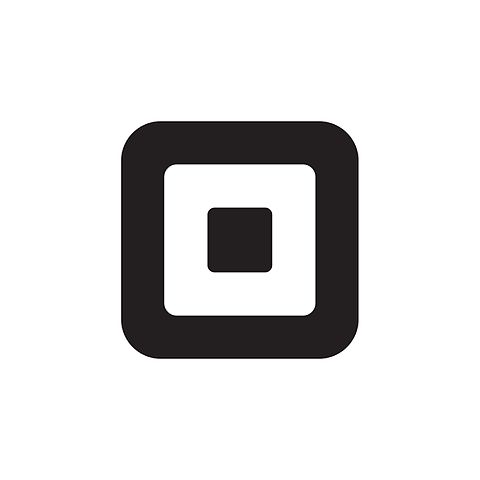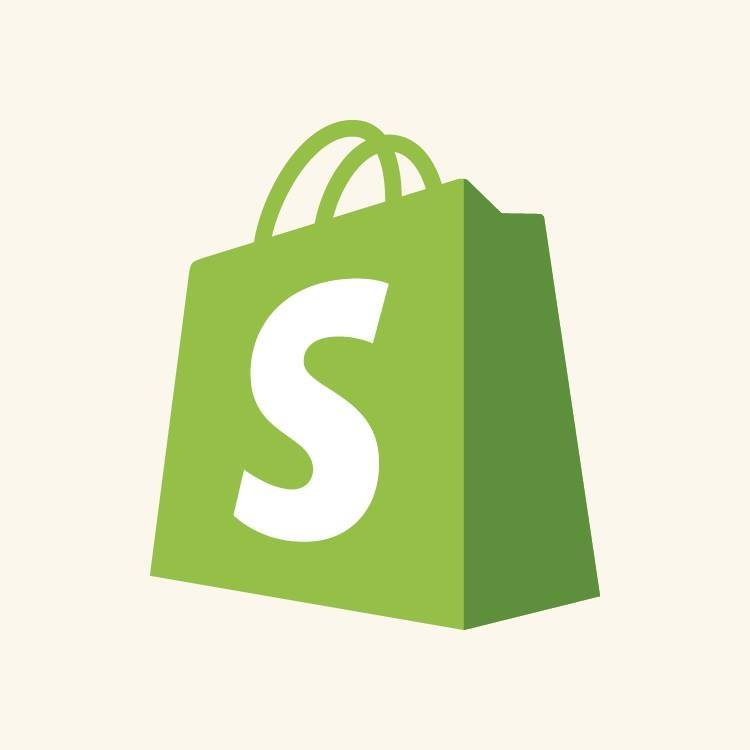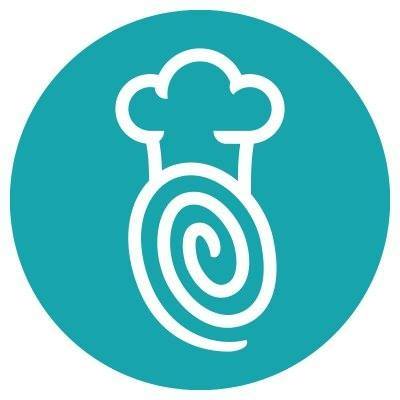A Point of Sale (POS) system is a combination of software and hardware that businesses use to facilitate customer transactions. At its core, a POS handles payment processing, inventory management, customer relationship management (CRM), and sales reporting.
POS systems help businesses streamline their operations where customer payments are concerned. They help them accept multiple payment methods, reduce human error, and improve the customer experience. These systems can even positively affect profit, as researchers at the Wharton School found that using some POS systems can increase sales by 9.74%.
That’s why, in this post, I’ve researched and curated the best POS systems UK businesses should look into in 2025 and beyond. I’ll discuss their features, pros, cons, and pricing for a detailed analysis.
- 1. Epos Now – All-in-One EPOS Solution
- 2. Square – Best for Omnichannel Selling
- 3. Shopify POS – Best for Shopify Merchants
- 4. Lightspeed Retail – Best for Advanced Inventory Management
- 5. Zettle – POS Solution by PayPal
- 6. Tide Card Reader – Best for Startups & New Businesses
- 7. SumUp – Best for Mobile Payments
- 8. Fondy – Supports QR Code Payments
- 9. Clover – Best for Retail and Services Businesses
- 10. Barclaycard POS – Best for Established Businesses using Barclays Account
- 11. TouchBistro – Best for Restaurant and Bar
- Show less
You can trust Geekflare
At Geekflare, trust and transparency are paramount. Our team of experts, with over 185 years of combined experience in business and technology, tests and reviews software, ensuring our ratings and awards are unbiased and reliable. Learn how we test.
Best POS Systems Comparison Table
In the table below, I’ve compared all the best POS systems on our list, considering pricing, hardware options, software features, integrations, and customers.
 |  |  |  |  |  |  |  |  |  |  | |
One-time purchase from £199 | From £19 per card reader, 1.75% processing fee for card payments | Shopify POS Lite from £5/month, Card processing fees from 5% + 25p online, 5% + 0p in person, and 5% for 3rd-party payment providers | £75/month (Basic plan) | £29 for the first card reader, £59 for additional units, 1.75% for major cards and mobile wallets | £49 for Tide Card Reader, 1.5% per card transaction | Free (Only for POS App), POS Lite starts at £299/terminal, with 1.69% per card transaction | No monthly fees, £0.2 authorisation fees, per-transaction fees start from 0.9% | Available on request | From £29 monthly, 1.6% per transaction | From $69/month per licence, Add-ons from $25 | |
Inventory management, customer management, Reporting & analytics, Payment processing | Inventory management, CRM, Sales & reporting, employee management, Invoicing, Payment processing | Omnichannel selling, Inventory management, staff management, CRM, Reporting & analytics, Products, Payment processing | Inventory management, CRM, Omnichannel selling, Reporting & analytics, Payment processing | Payment processing, Inventory management, Sales, Checkout, CRM | Payment Processing | Payment Processing, Inventory management, Sales management, Reporting & analytics | Payment processing, Reorting & analytics, Sales management | Payment processing, Inventory management, Employee management, Customer engagement, Reporting & analytics | Payment acceptance, Inventory management, Employee management, CRM, Reporting & analytics | Tableside ordering, Menu management, payment processing, Staff management, Customer engagement, Reporting & analytics | |
eCommerce, Accounting, Management, CRM, Payments, Appointments, Orders | Payment, Accounting, Ordering, Marketing, CRM, Scheduling | eCommerce, Marketing, Social media | eCommerce, Accounting, Inventory management, Payments, Payroll | Accounting, eCommerce | N/A | Accounting | Payment | N/A | N/A | Accounting, Business insights & analytics, Business insurance, Inventory, Payment processing, Scheduling and payroll | |
Phone, Email, Live chat | Phone, Email, Live chat | Email, Live chat | Phone, Email, Live chat | Phone, Email, Live chat | Phone, Email, In-app chat, Letter | Phone, Email, Live chat | Phone, Email, Live chat | Phone, Email, Live chat | Phone, Email | Phone, Email, Live chat | |
Geekflare’s editorial team determines ratings based on factors such as key features, ease of use, pricing, and customer support to help you choose the right business software. | |||||||||||
POS System Review
Below, I’ve reviewed several POS systems, highlighting why we picked them based on their features, pros, and cons. I have also given them an overall rating to help you choose the right solution.

1. Epos Now
All-in-One EPOS Solution
- Target AudienceRestaurants, Retail, Personal Care
- Handheld Payment SystemYes
Why We Picked Epos Now
Epos Now is a versatile and comprehensive POS primarily catering to the retail and hospitality industries. The system allows businesses to customise it to fit their specific operational needs, and its sheer number of integrations makes it highly adaptable.
It uses cloud-based technology for real-time data access from any device. It also has an intuitive user interface that minimises staff training time. What I particularly like about this POS system is that it offers a variety of hardware options that integrate seamlessly with the software.
Furthermore, Epos Now’s commitment to providing responsive customer support enhances its appeal, ensuring businesses can operate smoothly and resolve issues quickly.
Epos Now Pricing:
Epos Now offers a complete solution with a countertop, air card machine, cash drawer, and free onboarding for a one-time payment of £199.
Epos Now Features
Real-time tracking and low-stock alerts.
Staff scheduling, performance tracking, and role-based access.
Loyalty programs, customer data tracking, and personalised marketing.
Detailed sales, stock, and customer behaviour reports.
Support for online, in-store, and mobile sales integration.
Epos Now Pros/Cons
User-friendly interface.
Extensive app integrations.
No long-term contract obligation.
Reliable customer support.
Use with existing devices or Epos Now hardware.
Limited customisation for advanced reports.
Compatibility issues with third-party devices.
Extra costs for premium features and integrations can add up.

2. Square
Best for Omnichannel Selling
- Target AudienceRestaurants, Retail, Service
- Handheld Payment SystemYes
Why We Picked Square
Square offers seamless omnichannel selling, allowing businesses to manage in-store and online sales from a single platform. It can sync inventory across multiple sales channels, ensuring real-time updates, whether a sale occurs offline or online. This integration minimises the risk of overselling items and provides a consistent customer experience.
I also like how it is flexible in accepting payments through various methods, including contactless, chip and PIN, or even remotely through invoices. This enhances its omnichannel capabilities since it considers how customers can pay across different selling environments, improving both the buying and selling experience.
Square POS Pricing:
Square is free to use, but the following essential costs need to be considered:
— POS hardware starts at £19—this is per Square Reader.
— 1.75% processing fee per contactless or Chip and PIN payment.
— 2.5% processing fee for Virtual Terminal and Invoices.
— 1.4% + 25p for online transactions with UK cards.
— 2.5% + 25p for online transactions with non-UK cards.
Square Features
Manage inventory across all sales channels, including low-stock alerts and bulk updates.
Scheduling, time tracking, and permission controls for staff are integrated into the POS system.
Dispute management via Disputes Dashboards, making it easy to track and resolve disputes.
Detailed reports on sales, employee performance, and inventory.
Fraud detection and prevention tools that offer protection against the latest threats.
Integration with numerous third-party accounting software and e-commerce platforms.
Square Pros/Cons
Requires minimal staff training to use.
Combines POS, CRM, and inventory management in one place.
Allows for transactions on the go and offline.
No monthly fees for the basic POS software.
PCI-compliant payments and 2-step verification account protection.
Transaction fees add up, especially for high-volume businesses.
Hardware costs are high for smaller businesses.

3. Shopify POS
Best for Shopify Merchants
- Target AudienceRestaurants, Retail, Service
- Handheld Payment SystemYes
Why We Picked Shopify POS
Shopify POS is a fully integrated solution that seamlessly connects a business’s online and offline sales channels. The standout feature is the synchronisation of inventory, customer data, and orders across all Spotify selling platforms, ensuring businesses maintain consistency and accuracy in their operations.
Shopify also has omnichannel capabilities, which allow merchants to manage their business from a single dashboard. It supports various payment methods, which is crucial for both in-store and online transactions.
Shopify POS Pricing:
Shopify POS has several pricing options, with the base prices stated below:
— Shopify POS Lite starts from £5/month but has limited features.
— Shopify POS Pro starts at £69/month.
— Card processing fees start from 5% + 25p GBP online, 5% + 0p in person, and 5% for 3rd-party payment providers.
Shopify POS Features
Customisable staff permissions for security and accountability.
Detailed sales analytics that combine in-store and online sales data.
Real-time inventory updates across all sales channels.
Shopify POS app for iOS and Android for mobile checkout.
Manage returns, whether in-store or online, within the same system.
Shopify POS Pros/Cons
Offers a centralised management system.
Robust POS hardware for Shopify merchants.
Third-party app integrations for extended functionality.
Supports multiple payment methods.
Regular updates and features that evolve with eCommerce trends.
Additional costs for advanced features.
Steep learning curve for those new to Shopify.
Non-Shopify Payments are expensive.

4. Lightspeed Retail
Best for Advanced Inventory Management
- Target AudienceRestaurants, Retail, eCommerce
- Handheld Payment SystemYes
Why We Picked Lightspeed Retail
Lightspeed Retail is a comprehensive POS tailored for businesses with complex stock needs. I found its real-time inventory feature useful for businesses that want to track their stock across multiple locations. It’s a good solution for retailers to manage diverse product lines or operate in omnichannel environments.
I like that Lightspeed Retail also includes inventory forecasting, low stock alerts, and the ability to create purchase orders directly from sales data. This ensures businesses never miss the opportunity to replenish their inventory.
The system’s ability to manage product variants, serial numbers, and matrix inventory gives businesses precise control over their stock. This way, they can reduce discrepancies while improving their efficiency.
Lightspeed POS Pricing:
Lightspeed has 3 pricing plans, as outlined below (all pricing is valid when billed annually):
— Basic: £75/month (for independent retailers)
— Core: £149/month (for growing retailers)
— Plus: £189/month (for large retail enterprises)
— Custom: Speak to sales
Lightspeed Retail Features
Bulk updates, matrix inventory for managing variants, and automatic reorder points.
Build customer profiles, track purchase history, and manage loyalty programs.
Real-time comprehensive reports on sales, inventory performance, and customer behaviour.
Handles various aspects, from a single store to multiple locations, without performance degradation.
Lightspeed Retail Pros/Cons
Robust inventory control.
Omnichannel capabilities.
Highly adaptable to specific business needs.
API access for custom integrations.
PCI compliance and data encryption.
Higher pricing compared to some competitors.
Has a steeper learning curve for beginners.

5. Zettle
POS Solution by PayPal
- Target AudienceRestaurants, Retail, eCommerce
- Handheld Payment SystemYes
Why We Picked Zettle
Zettle is a versatile POS system by PayPal that simplifies daily business operations, especially for small to medium-sized enterprises. I found that its all-in-one Terminal, which integrates payment processing and POS software into a single device, helps businesses cut costs by eliminating the need for external hardware like smartphones or tablets.
The POS is designed with mobility in mind, allowing sales anywhere. Businesses can even make sales without Wi-Fi through its preloaded SIM card. It can also accept contactless payments directly through a smartphone with Tap to Pay.
Zettle Pricing:
Zettle has no monthly charges, but businesses need to pay attention to the following costs:
— £29 for the first card reader, and £59 for additional units.
— The Terminal starts from £149.
— Bespoke POS setup starts from £189.
— 1.75% for major cards and mobile wallets.
Zettle Features
Zettle’s system works seamlessly on mobile devices for businesses on the move.
Tracks stock levels in real-time to prevent overselling and simplify restocking.
Offers both a compact card reader and an all-in-one terminal.
Integrations to streamline business operations.
Provides insights into sales trends, staff performance, and inventory.
Zettle Pros/Cons
No monthly fees.
Easy to set up and use.
Suitable for expanding business.
Offers comprehensive help through a dedicated support team.
Benefits from robust security measures set up by PayPal.
Costly for businesses with high transaction volumes.
POS software has limited customisation.
Require additional hardware for more complex setups.

6. Tide Card Reader
Best for Startups & New Businesses
- Target AudienceRestaurants, Retail, Service
- Handheld Payment SystemYes
Why We Picked Tide Card Reader
Tide Card Reader is a mobile POS that streamlines card payments without the complexities of traditional POS systems. This makes it perfect for startups and new businesses. I like how it’s integrated into Tide’s business banking, providing a seamless experience when accepting payments and managing funds.
The POS also eliminates monthly fees and provides competitive transaction fees. I find its cashback rewards for businesses a good incentive for new users to start taking card payments immediately.
Tide Card Reader Pricing:
Tide Card Reader POS doesn’t require any monthly fee, but the following hardware and transactional costs need to be kept in mind:
— The initial purchase of the Tide Card Reader is £49.
— £79 for the Tide Card Reader Plus.
— Standard transaction fees are 1.5% for card transactions.
Tide Card Reader Features
Designed for mobility, allowing transactions anywhere.
Compact and user-friendly, accepting contactless and chip payments.
Cashback rewards after processing £500 worth of payments through your Tide Card Reader.
Directly linked to Tide’s banking app, facilitating automatic transaction recording and reconciliation.
Ensures transaction safety with a PCI PTS-approved device, protecting both business and customer data.
Tide Card Reader Pros/Cons
No setup fees.
Designed for business owners without extensive tech knowledge of POS systems.
Low transaction fees.
Quick fund availability after setup.
Only for businesses with a Tide account.
Lacks advanced features (e.g., inventory management or CRM).
Requires constant internet connection to process payments.

7. SumUp
Best for Mobile Payments
- Target AudienceRestaurants, Retail, Hospitality, eCommerce
- Handheld Payment SystemYes
Why We Picked SumUp
SumUp is an ideal solution for businesses focused on mobile payments. Its POS Lite device offers an out-of-the-box system that suits merchants who need mobility without compromising functionality. It also frees businesses from the burden of monthly fees since there are no subscription costs.
The POS Lite comes pre-installed with POS software, allowing businesses to accept payments, manage sales, and organise inventory from anywhere. This makes it perfect for markets, pop-ups, or any on-the-go selling scenario.
There is a one-time hardware purchase, and an interface designed for simplicity, ensuring quick setup and use even for those less tech-savvy.
SumUp Pricing:
If you’re thinking of becoming a SumUp customer, here is the relevant pricing information to take note of:
— POS App is free, with no hardware or monthly cost.
— POS Lite is available for purchase at £299, with the Solo card reader.
— POS Pro is available for purchase at £755, with a £49 monthly cost and 0.99% transaction fee.
— A flat rate of 1.69% per transaction is charged for card payments across POS App and POS Lite users.
— Custom plans are available for businesses processing over £60,000 annually.
SumUp Features
13-inch splashproof touchscreen and card reader.
Supports mobile transactions, enhancing flexibility for businesses operating outside a fixed location.
Allows creation and management of a product catalogue with price variations.
Manage transactions efficiently with digital and printed receipts, built-in tipping, and seamless refund processing.
Sales and payout reports enable businesses to track performance and manage finances on the go.
SumUp Pros/Cons
No subscription, pre-installed POS software.
Very easy to use.
Suitable for various business types.
2-year warranty.
Lacks CRM features and deep integration with third-party apps.
Per-transaction fees accumulate for high-volume businesses.

8. Fondy
Supports QR Code Payments
- Target AudienceRestaurants, Retail, Service
- Handheld Payment SystemYes
Why We Picked Fondy
Fondy is a comprehensive ePOS solution that stands out with its modern approach to payment processing. It allows businesses to accept offline and online transactions seamlessly with a mobile device, turning it into an ePOS terminal.
What impresses me is that it integrates the ease of accepting payments via QR codes, which customers can scan using their smartphones, offering a contactless and convenient payment option.
Fondy also eliminates the need for traditional POS hardware, providing a cost-effective solution for businesses of all sizes. It offers a single interface for managing both in-store and remote payments.
Fondy Pricing:
I’ve highlighted Fondy’s payment information below:
— Authorisation fees are £0.2 to accept payments.
— Fondy’s per-transaction fees start from 0.9% for card and digital wallet transactions.
— No monthly fees and hardware costs (since it’s an ePOS system).
SumUp Features
The Fondy Terminal app transforms your Android device into a payment terminal.
State-of-the-art security features like Fondy.Antifraud, alongside Tap to Phone, for secure transactions.
Can be integrated with various platforms for payments on websites, social media, and mobile apps.
Businesses can accept payments in 150+ currencies and 300+ local payment methods.
Can process transactions without an internet connection and sync them once connectivity is restored.
SumUp Pros/Cons
No need for expensive POS hardware.
The user-friendly interface simplifies payment processing.
Supports a wide array of payment options, including cards, QR codes, digital wallets, and payment links.
24/7 customer support with a team that speaks over 16 languages.
Lack of advanced features (CRM, inventory management) that other POS software have.
Those switching from a traditional POS system will require some adaptation.
No barcode scanners or receipt printers.

9. Clover
Best for Retail and Services Businesses
- Target AudienceRetail, Service, Restaurants
- Handheld Payment SystemYes
Why We Picked Clover
Clover is a robust POS solution specifically for retail and service businesses, offering an ecosystem where all aspects of business management come together in a single platform.
The system offers several devices like Clover Flex, Mini, and Station, with costs varying from rental options to outright purchase. I like its customisable hardware and software options that cater to multiple business models, from small boutiques to larger retail chains.
Furthermore, Clover combines inventory management, customer insights, and employee oversight into one user-friendly interface. It has many apps available through the Clover App Market that allow businesses to extend functionality without needing multiple systems.
Clover also commits to providing dedicated UK-based customer support to ensure businesses can maximise the system’s use.
Clover Pricing:
Clover offers custom solutions for businesses. You’ll have to contact their sales team with your requirements for an exact quote.
Clover Features
Comprehensive tools for tracking stock across multiple locations with real-time analytics.
Offers employee management features like time tracking, scheduling, and permission settings.
Captures customer data to personalise service, encourage customer loyalty (e.g., deals, discounts, and gift cards), and enhance marketing efforts.
Delivers detailed sales reports and insights through the Clover dashboard to inform business decisions.
Compatible with numerous third-party services, including e-commerce platforms and accounting software.
Provides business capital, from £1,000 to £500,000, to UK businesses.
Clover Pros/Cons
Various POS options are available.
Clover App Market provides additional tools and services.
Robust security measures to protect transaction data and customer information.
Dedicated customer support through live web chat and phone assistance.
No hidden costs.
Pricing is complex and requires businesses to contact sales.
Requires long-term contracts.
Services are mostly tailored to businesses in the UK.

10. Barclaycard POS
Best for Established Businesses using Barclays Account
- Target AudienceRetail, Hospitality, Services
- Handheld Payment SystemYes
Why We Picked Barclaycard POS
Barclaycard POS is best for businesses that already have a relationship with Barclays, allowing them to take advantage of its banking services. It offers an all-in-one POS system that helps merchants manage sales across multiple channels with ease.
The POS includes next-day settlement of funds into Barclays accounts, which directly improves a business’s cash flow. It accepts all major payment types, including contactless and digital payments.
Businesses can pair the system with FreshBooks accounting software, worth £300 a year, for free with selected plans, significantly reducing administrative burden.
Barclaycard POS Pricing:
These are the 2 important costs to be aware of when dealing with Barclaycard POS:
— £29 monthly fee and 1.6% per transaction for card payments under £100K.
— £29 monthly fee and custom costs per transaction for card payments over £100K.
Barclaycard POS Features
Track stock levels to prevent overselling and manage replenishment.
Scheduling, tracking sales performance, and managing employee permissions.
Detailed sales, inventory, and employee performance reports.
Seamlessly connects with accounting software like FreshBooks for eligible businesses, reducing manual data entry.
No-interest Barclaycard Business Cash Advance—repay automatically with a small portion of card transactions.
Barclaycard POS Pros/Cons
Integration with Barclays banking system.
Next-day settlement in Barclays account.
No cancellation fees.
Dedicated support teams offer assistance.
Accepts all major payment types.
Dependency on Barclays.
12-month contract required.
No one-time hardware purchasing fee.

11. TouchBistro
Best for Restaurant and Bar
- Target AudienceRestaurants, Bars
- Handheld Payment SystemYes
Why We Picked TouchBistro
TouchBistro helps businesses streamline operations, from ordering to payment. It’s built to handle the fast-paced hospitality environment, including restaurants and bars, providing features like tableside ordering for faster service and a kitchen display system (KDS) for improved order accuracy and efficiency.
The POS features a hybrid cloud-local setup, allowing offline functionality in case of internet disruptions. It also has a user-friendly interface designed by restaurant professionals for restaurant professionals.
I like that TouchBistro focuses on enhancing the customer experience through loyalty programs, providing extra incentives and importance to longtime customers. It also offers online ordering capabilities and detailed analytics tailored to food and beverage sales.
TouchBistro Pricing:
Here are the relevant details regarding TouchBistro’s pricing:
— Starts at $69/month for 1 license (register), with different pricing for additional licenses based on business size.
— Additional fees for guest engagement features like online ordering, reservations, and loyalty programs, which range from $25 to $229/month.
TouchBistro Features
Tracks ingredient usage and costs, helping to manage stock and reduce waste.
Staff scheduling, performance tracking, and permission control to manage labour costs effectively.
Tools for loyalty programs, customer data analysis, and personalised marketing.
Over 50 reports on sales, staff performance, and inventory for comprehensive business insights.
Connects with numerous third-party solutions for accounting, payroll, reservations, and more.
TouchBistro Pros/Cons
Offline mode for quick and easy payments on the go.
Customisable POS hardware.
Dedicated onboarding manager to guide with the set-up process.
Dedicated support for restaurant-specific issues.
The monthly cost is higher than some competitors.
The system becomes expensive with add-ons and hardware.
No Free Trial.
7 Types of POS Systems for Small Businesses
For small businesses, multiple types of Point of Sale (POS) systems are available, each with unique features that can cater to different business needs. Below, I’ve highlighted and detailed the 7 most common types of POS systems you’ll find in use today.
- Mobile POS: A mobile POS or handheld POS is a portable device that can be used to process payments on the go. They offer the flexibility of payment tracking with mobility so businesses can transact anywhere, as long as they have internet connectivity. They are becoming increasingly popular, with users expected to reach 3.55bn worldwide by 2029, according to Statista.
- Terminal POS: This is your traditional POS, with dedicated hardware, such as a cash drawer, card reader, and receipt printer, that has been placed at a fixed point in a business establishment. This type of POS is best for businesses where customers pay at a specific location, such as a retail store.
- Cloud-based POS: This POS system stores data on the cloud, allowing businesses to sync it between devices. It’s beneficial for businesses that have multiple locations and need to access data on any device for real-time sales and inventory tracking.
- Kiosk POS: These are self-service POS systems that customers can use to make purchases without assistance. They can significantly reduce wait times and the need to hire more staff to assist them. They are usually found in places like malls, airports, or fast-food restaurants, where it’s quicker for people to handle the purchasing process by themselves.
- POS Apps: These are purely software-based POS systems that transform smartphones and tablets into ePOS systems. They can also be part of broader POS systems. The apps offer features like inventory management, customer relationship management (CRM), and reports. They usually require minimal investment and setup, making them ideal for startups and small businesses.
- Multichannel POS: This is a POS system that enables businesses to sell through multiple channels, including in-store, online, and mobile. At the same time, they keep data, such as sales, inventory, and transactions, synchronised across the different platforms.
- Omnichannel POS: This is a comprehensive POS system that integrates sales and customer experience across all business channels. Omnichannel POS works alongside other POS types like mobile POS, terminal POS, cloud-based POS, kiosk POS, and POS apps, each serving a different business need.

